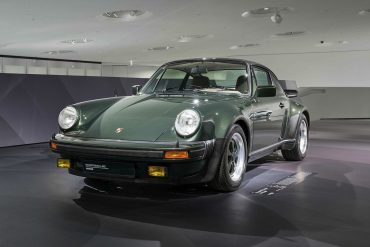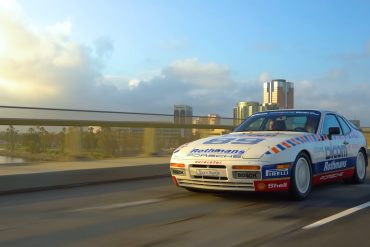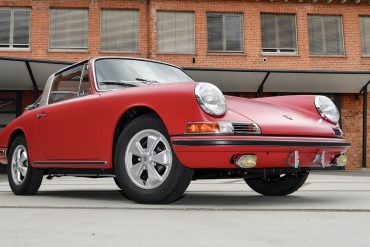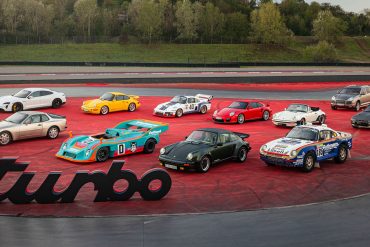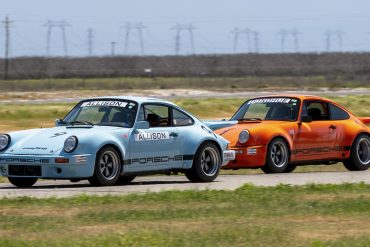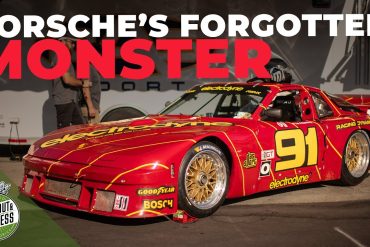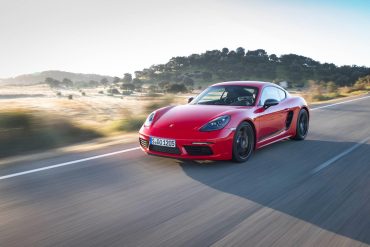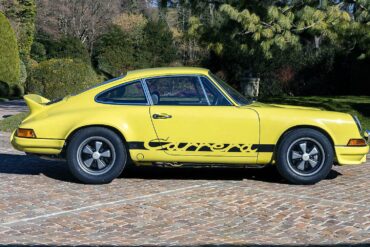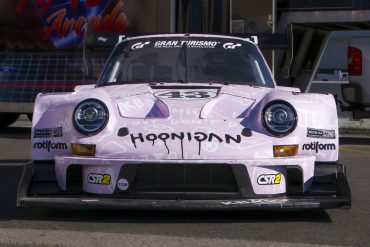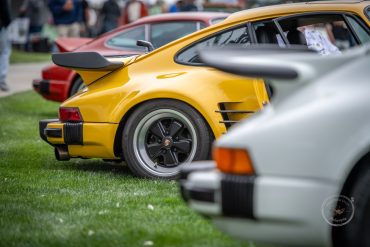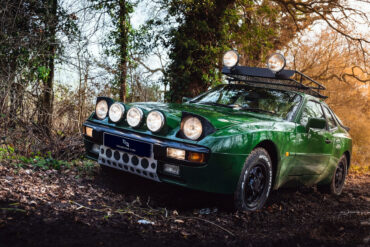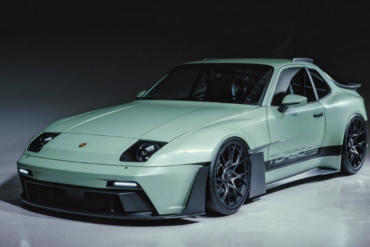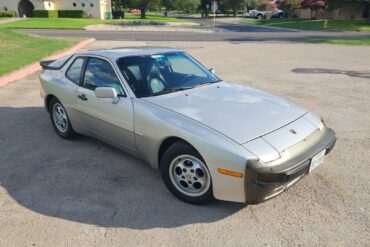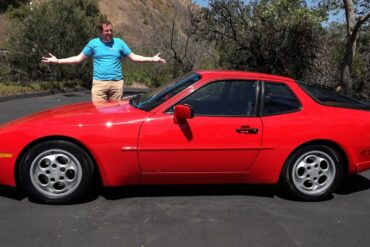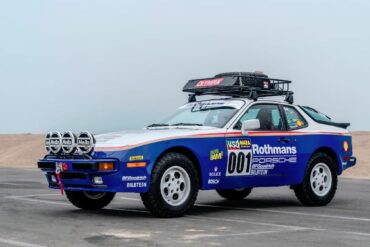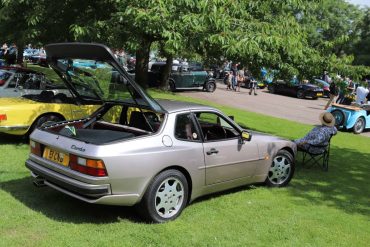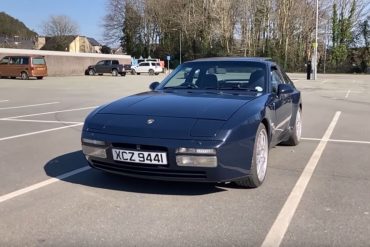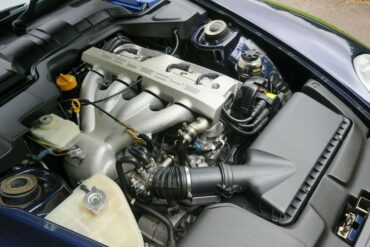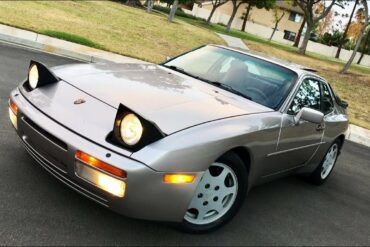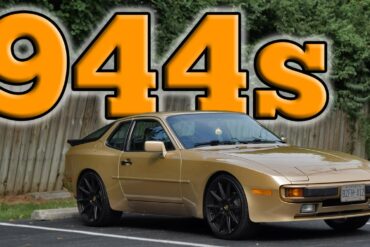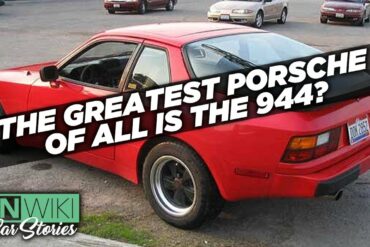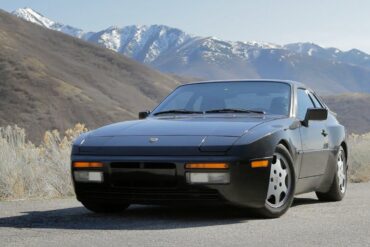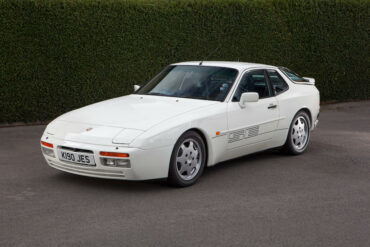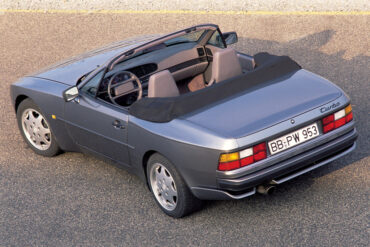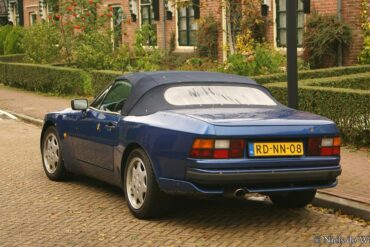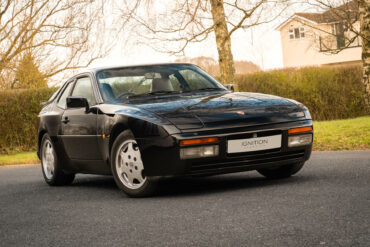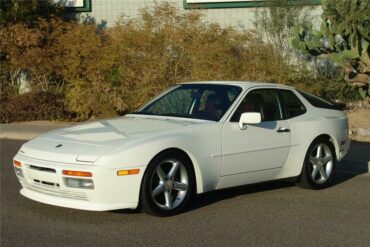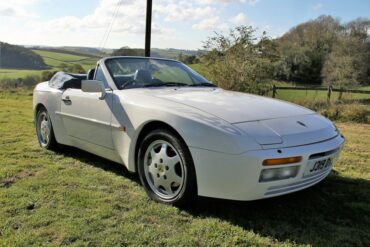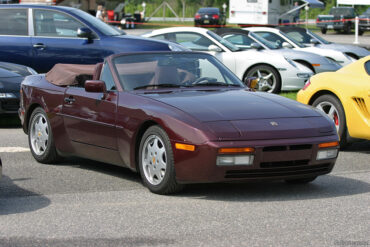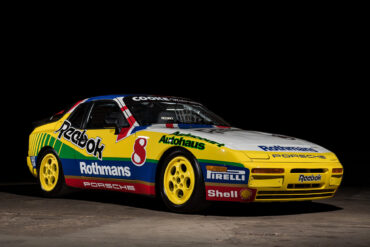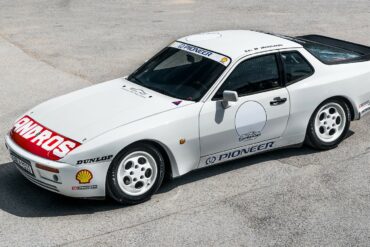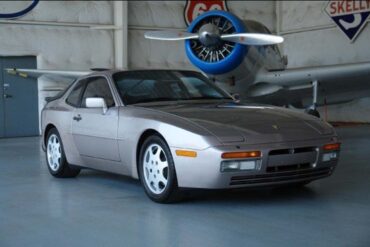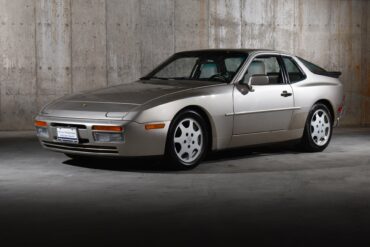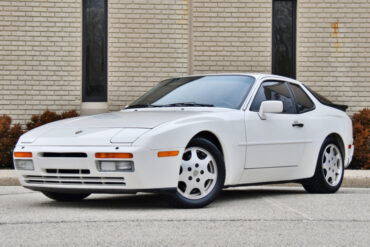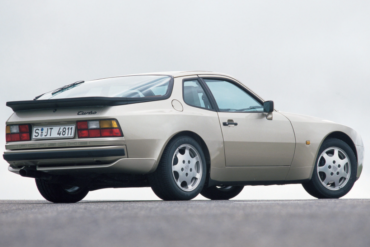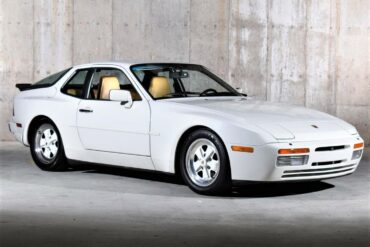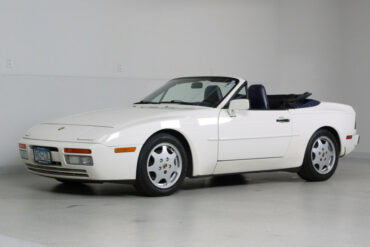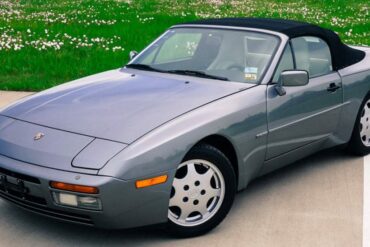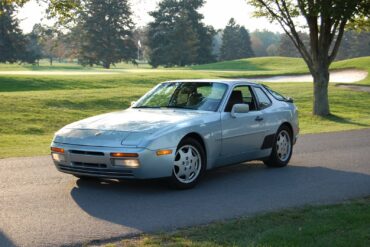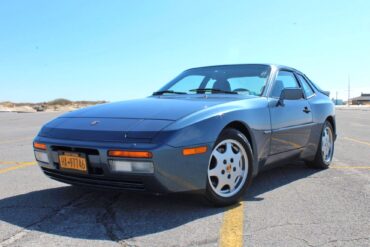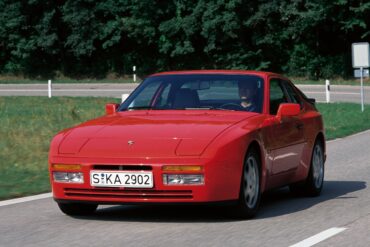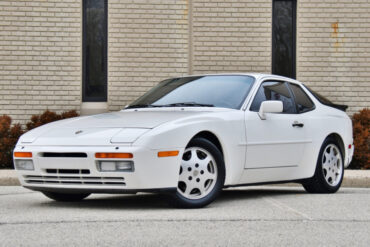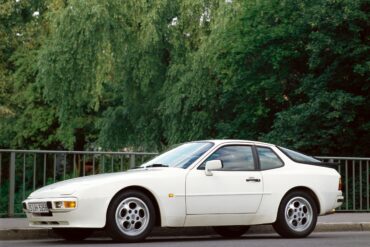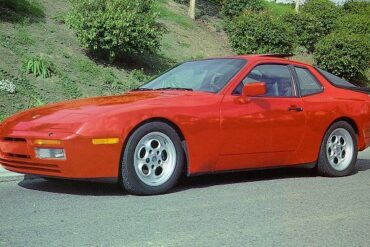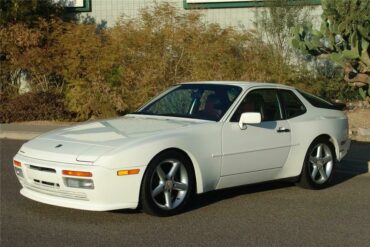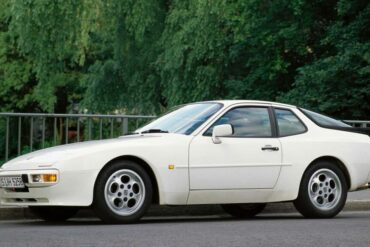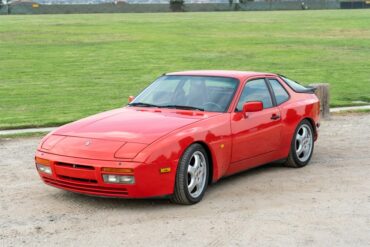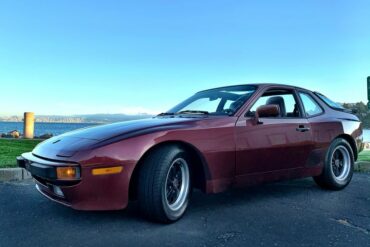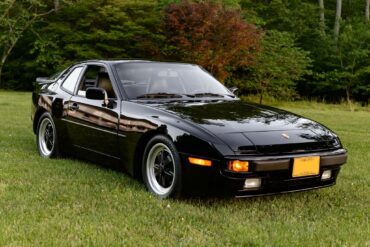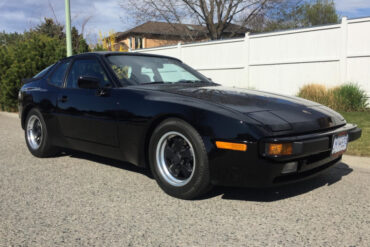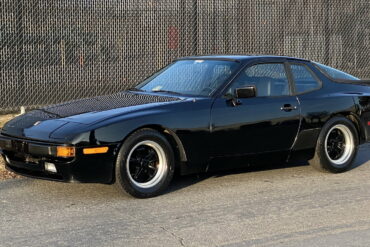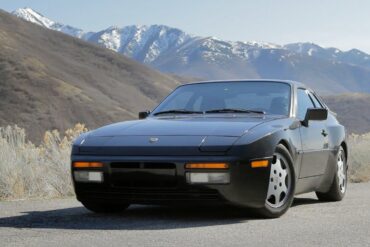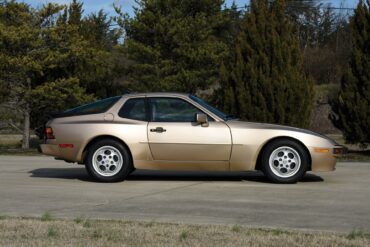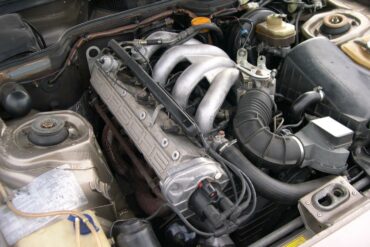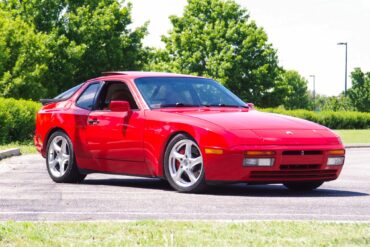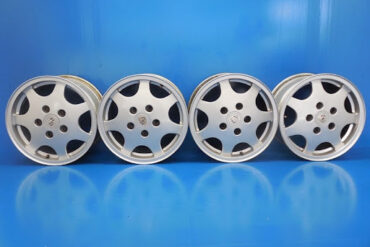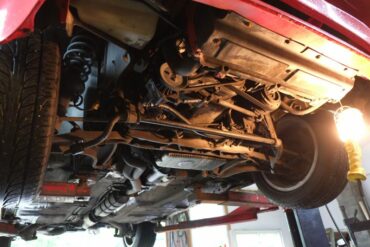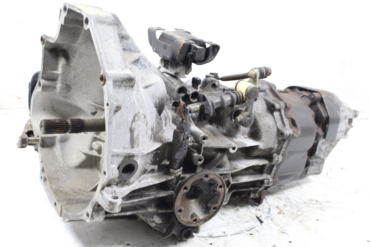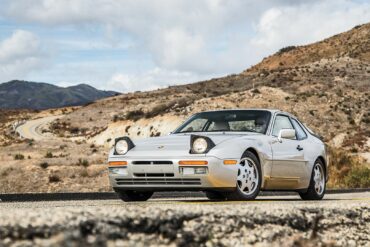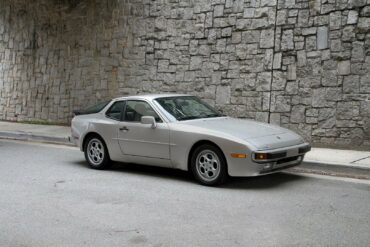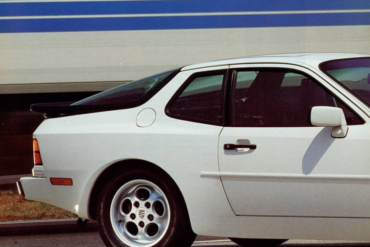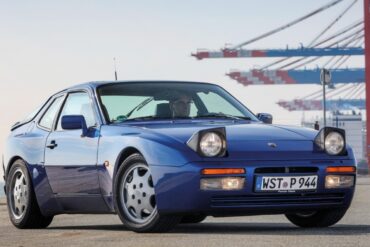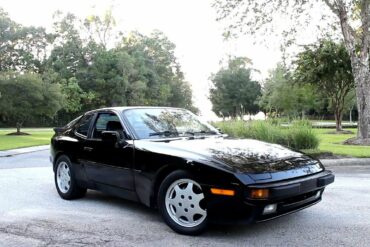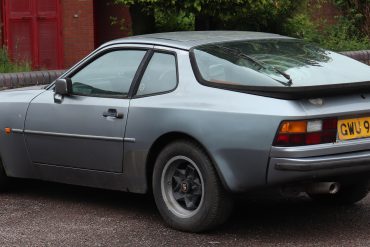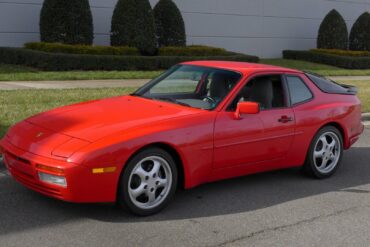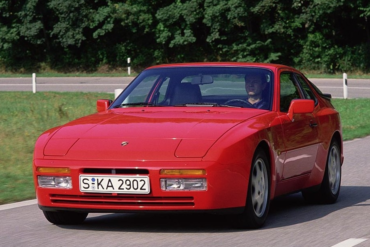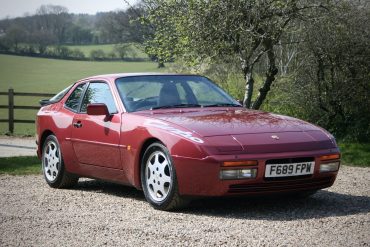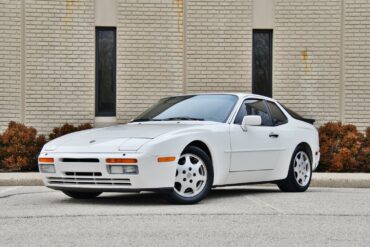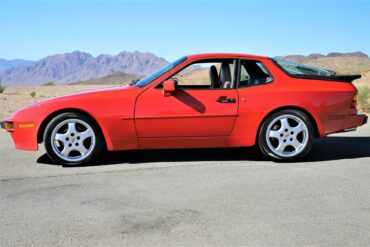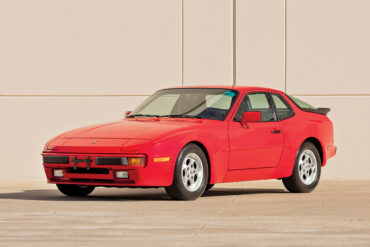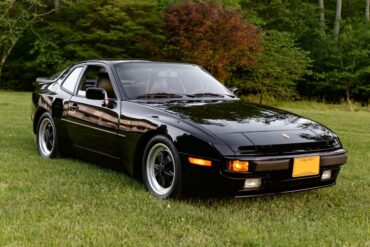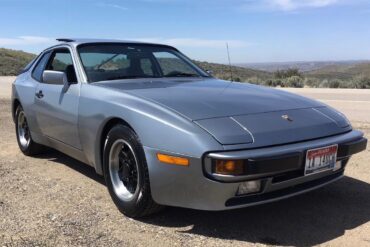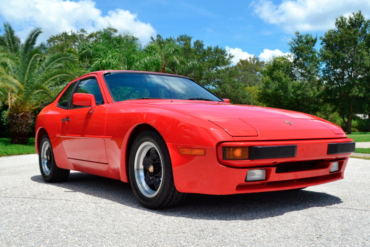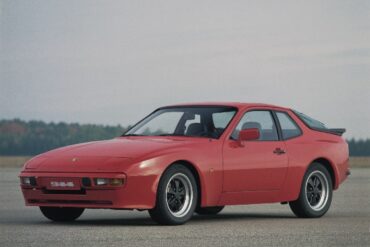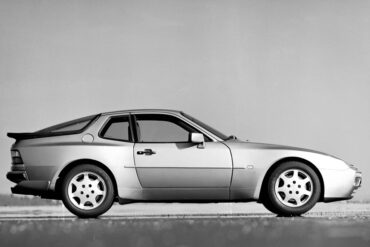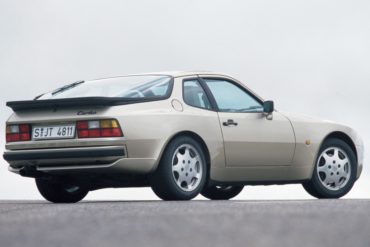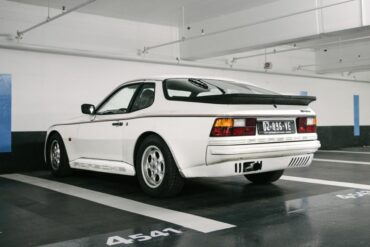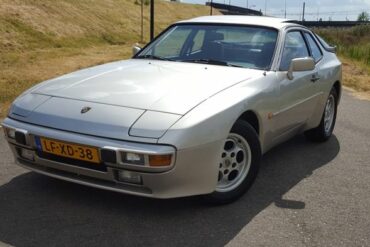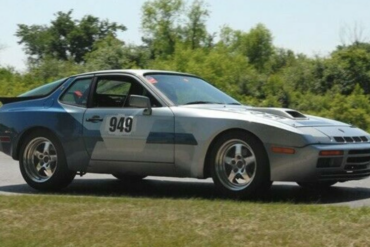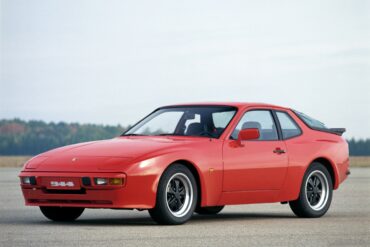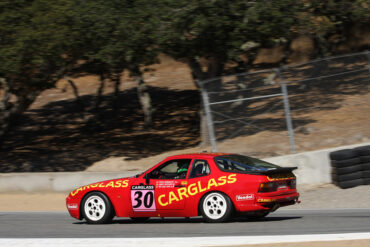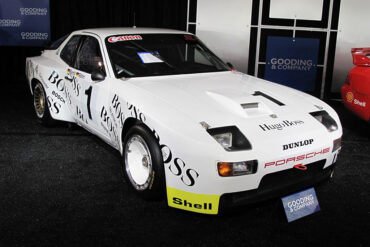Professor Fred Poordad is a doctor out of passion. The American is an expert and globally renowned in liver research....
Porsche 944
The car was the brainchild of the newly appointed Peter Schutz, the CEO of the Porsche company. He decided to debut the new 944, which was the replacement for the 924, at the 24 Hours Le Mans race of 1981. The project was greenlighted in 1980, in response to dropping sales of the Porsche 924. Although it was basically a 924 with a proper Porsche engine, body styling and trim, the 944 looked like a more grown up car than the 924. Improvements over the out-going 924 were plain to see – beginning with the flared front and rear wheel arches. These became the trademark of the 944, and pulled in the buyers due to the butch stance and powerful presence they gave the car. Other differences were small but significant – on US models, the ugly 924 side reflectors were replaced with smooth, bumper-line examples. A rear spoiler, lining the lift-glass, made the rear-end look more functional and sporty. Drag coefficient was reduced to 0.35 over the 924, and the body panels were zinc-coated in all markets to prevent corrosion. This Porsche 944 was fitted with the new 2.5 liter four cylinder engine derived from Porsche’s V8. See all our Porsche 944 Research.
All
When Porsche unveiled the world’s first production sports car with a turbo engine in 1974, the automotive world changed overnight....
The new “Beyond Performance. 50 years of Porsche Turbo” special exhibition at the Porsche Museum is officially open. Over the...
Let’s join Magnus Walker, Porsche enthusiast and collector, as he takes a stunningly preserved 1988 Rothmans Turbo Cup car for...
They might have access to original bodywork methods, tools, parts and the company archive. But the most valuable thing is...
A visit to Porsche at the Retro Classics in Stuttgart is always a journey through time. This year, the sports...
The 15th Targa California rally recently concluded with most drivers logging 1,000+ miles over the roads “less traveled” of California’s...
Though not reaching the iconic status of Le Mans legends such as the 956, 962, or the numerous RSRs entrenched...
On a different budget? Check out our other Buyer’s Guides: Budget Based Porsche Buyer’s Guide: Up to $25,000 Budget Based...
Foreword For the would-be Porsche owner, the cost of entry can at first glance seem pretty discouraging: a fully specified...
If you think post-war sports cars or muscle cars from the late 1960s are the staple of the collector car...
The 9th annual Werks Reunion Monterey, held by the Porsche Club of America, took place for the second year in...
Mud and rain welcome This is a Porsche 944 that’s been converted to Safari-specification by the team of specialists over...
With the launch of the 2022/23 992 GT3 RS variant, it has inspired Khyzyl Saleem, with the Instagram account the_kyza...
In 1987 Porsche debuted the 944 S, the “S” standing for “Super”. It looked sportier than its non-S version and...
1988 Porsche 944 Turbo Review Doug DeMuro makes the case for the Porsche 944 Turbo in one of his signature...
Only 12 hours to go to acquire a comprehensively modified 1986 Porsche 944 Safari ‘Rothmans’ example that is currently on...
Warwickshire Event Center will be the venue of the Classic Car Auctions June sale and they will be offering a...
Despite being overshadowed by its more renowned peers, the Porsche 944 is still a well-loved classic. Recently, Electric Classic Cars,...
Porsche 968 Engine Codes...
1988 Porsche 944 Turbo S – One Take This 1988 Porsche 944 Turbo S (also referred to as 951) is...
Regular Car Reviews – The Porsche 944 We review the over-hyped under-powered middle-child of the Porsche 944, the 944s. This...
The best Porsche? How About the 944 The guys climb into a tuned 944 Turbo to kick off our new...
Porsche 944 Turbo – Fast Blast Review The guys climb into a tuned 944 Turbo to kick off our new...
The 944 range officially ended production in July 1991. A dated range and slow sales wrote the obituary for the model, but in the UK, brand-new cars still languished at dealers well into 1993. A UK-only special edition was made in 1992 and it was called the Porsche 944 S2 SE. It was basically an S2 brought up to full specification, for less than the standard car. Very limited, only 15 were eventually made. Benefits listed include improved acceleration in higher rev range; flatter cornering due to stiffer springs and increased roll resistance...
The last iteration of the 944 Turbo was the 944 Turbo Cabriolet which was the 944 Turbo Cabriolet. This was a 944 Turbo S with a special cabriolet body made by the American Sunroof Company (ASC) of Weinsberg, Germany, who also made the bodies for the 944 S2 Cabriolet. 625 of the 944 Turbo Cabriolet were made with 100 being built with right hand drive and the remaining 525 being left hand drive.
The S2 was also available as a cabriolet, a first for the 944 line. The Cabriolet, engineered by American Sunroof Company, was rumored to be two years late in arriving on the market due to unprecedented chassis flex problems. The finished article, despite being 70 KG heavier than the coupe, displayed no obvious signs of such problems, and its clean lines found a place in many hearts.
The covers were lifted off the 944's next-generation model in early 1989, the stunningly contemporary 944 S2. Porsche, as a company, were heading into tough times and were relying on the 944 S2 and the new 911, the 964, to make enough money just to stay afloat. Porsche upped the performance of the 944 S2 thanks to an upgraded engine, a 3.0 liter version of the DOHC double valve four cylinder that was good for solid 208 hp. The 16-valve engine was bored out from 2.5 litres to 3.0 litres.
In 1987 Porsche debuted the 944 S, the “S” standing for “Super”. This “Super” Porsche 944 was fitted with a more high performance version of the naturally aspirated four cylinder engine. This engine version had dual overhead camshafts to operate the four valves per cylinder and a revised Motronic 2 engine management system with dual knock sensors to best handle the 10.9:1 compression ratio. Power was a comfortably adequate 187hp.
Porsche 944 VIN and Engine Numbers Our reader already know we have an in-depth VIN decoder for Porsche models, so...
1988 Porsche 944 Turbo Cabriolet Technical Specifications Engine Type Inline 4 Induction Turbocharged Cooling Water-cooled Valvetrain Single overhead camshafts Injection Port...
The Porsche 944 Turbo Cup For 1986, Porsche 944 Turbo Cup series was created in Germany and 944 Challenge in...
1988 Porsche 944 Turbo S Coupe Technical Specifications Engine Type Inline 4 Induction Turbocharged Cooling Water-cooled Valvetrain Single overhead camshafts Injection...
1989 Porsche 944 Turbo Coupe Technical Specifications Engine Type Inline 4 Induction Turbocharged Cooling Water-cooled Valvetrain Single overhead camshafts Injection Port...
1988 Porsche 944 Turbo Coupe Technical Specifications Engine Type Inline 4 Induction Turbocharged Cooling Water-cooled Valvetrain Single overhead camshafts Injection Port...
1987 Porsche 944 Turbo Coupe Technical Specifications Engine Type Inline 4 Induction Turbocharged Cooling Water-cooled Valvetrain Single overhead camshafts Injection Port...
1986 Porsche 944 Turbo Coupe Technical Specifications Engine Type Inline 4 Induction Turbocharged Cooling Water-cooled Valvetrain Single overhead camshafts Injection Port...
1991 Porsche 944 S2 Cabriolet Technical Specifications Engine Type Inline 4 Induction Normally-aspirated Cooling Water-cooled Valvetrain Double overhead camshafts Injection Port...
1990 Porsche 944 S2 Cabriolet Technical Specifications Engine Type Inline 4 Induction Normally-aspirated Cooling Water-cooled Valvetrain Double overhead camshafts Injection Port...
1991 Porsche 944 S2 Coupe Technical Specifications Engine Type Inline 4 Induction Normally-aspirated Cooling Water-cooled Valvetrain Double overhead camshafts Injection...
1990 Porsche 944 S2 Coupe Technical Specifications Engine Type Inline 4 Induction Normally-aspirated Cooling Water-cooled Valvetrain Double overhead camshafts Injection...
1989 Porsche 944 S2 Coupe Technical Specifications Engine Type Inline 4 Induction Normally-aspirated Cooling Water-cooled Valvetrain Double overhead camshafts Injection...
1988 Porsche 944 S Coupe Technical Specifications Engine Type Inline 4 Induction Normally-aspirated Cooling Water-cooled Valvetrain Double overhead camshafts Injection...
1987 Porsche 944 S Coupe Technical Specifications Engine Type Inline 4 Induction Normally-aspirated Cooling Water-cooled Valvetrain Double overhead camshafts Injection...
1989 Porsche 944 Coupe Technical Specifications Engine Type Inline 4 Induction Normally-aspirated Cooling Water-cooled Valvetrain Single overhead camshaft Injection Port...
1988 Porsche 944 Coupe Technical Specifications Engine Type Inline 4 Induction Normally-aspirated Cooling Water-cooled Valvetrain Single overhead camshaft Injection Port...
1987 Porsche 944 Coupe Technical Specifications Engine Type Inline 4 Induction Normally-aspirated Cooling Water-cooled Valvetrain Single overhead camshaft Injection Port...
1986 Porsche 944 Coupe Technical Specifications Engine Type Inline 4 Induction Normally-aspirated Cooling Water-cooled Valvetrain Single overhead camshaft Injection Port...
1985.5 Porsche 944 Coupe Technical Specifications Engine Type Inline 4 Induction Normally-aspirated Cooling Water-cooled Valvetrain Single overhead camshaft Injection Port...
1985 Porsche 944 Coupe Technical Specifications Engine Type Inline 4 Induction Normally-aspirated Cooling Water-cooled Valvetrain Single overhead camshaft Injection Port...
1984 Porsche 944 Coupe Technical Specifications Engine Type Inline 4 Induction Normally-aspirated Cooling Water-cooled Valvetrain Single overhead camshaft Injection Port...
1983 Porsche 944 Coupe Technical Specifications Engine Type Inline 4 Induction Normally-aspirated Cooling Water-cooled Valvetrain Single overhead camshaft Injection Port...
Porsche 944 Production & Sales Units The Porsche 944 sold super-well and a total of 173,238 cars were produced throughout...
Porsche 944 Paint Color Options & Samples This post outlines all the color options for the Porsche 944 over its...
Porsche 944 Model Numbers Porsche type numbers related to 944. We have the type number description: Type 941 – Porsche...
Porsche 944 Wheels There are two major differences to watch out for with 944 wheels – are they early offset...
Porsche 944 Stabilizer Bars front 20 mm 944 …-1986 rear 14 mm …-1988 21.5 mm 944 1987-… 16 mm 1989-…...
Porsche 944 Transmission Codes ...
Porsche 944 History & Story The predecessor, the 924, was initially designed for Volkswagen. It was beautifully done by Porsche and...
The Porsche 944 Celebration Edition was a special edition of the 944 base model produced to commemorate the 100,000th 944 built in Neckarsulm, Germany. A total of 930 units were produced in one of two colors: Zermatt Silver and Satin Black Metallic. These celebration models- effectively standard cars brought up to a very high specification, featured black leatherette, the attractive grey or maroon "STUDIO" cloth and silver and grey carpeting.
Porsche 944 Sales Brochure The 944 was Porsche’s 3rd front engined sports car. Production years 1982-1991. Available as 944, 944S,...
Porsche 944 Spare Parts Catalogs (1989 – 1991 Model Year) These official Porsche PET Diagrams and codes for the Porsche...
Porsche 944 Spare Parts Catalogs (1985 – 1988 Model Year) These official Porsche PET Diagrams and codes for the Porsche...
Porsche 944 Spare Parts Catalogs (1982 – 1985 Model Year) These official Porsche PET Diagrams and codes for the Porsche...
Porsche Option Codes – Porsche 944 (1991 Model Year) Looking to decode your 1991 Porsche 944 option codes? Want to...
Porsche Option Codes – Porsche 944 (1990 Model Year) Looking to decode your 1990 Porsche 944 option codes? Want to...
Porsche Option Codes – Porsche 944 (1989 Model Year) Looking to decode your 1989 Porsche 944 option codes? Want to...
Porsche Option Codes – Porsche 944 (1988 Model Year) 2.5/944 S/Turbo/Turbo S Looking to decode your 1988 Porsche 944 option...
Porsche Option Codes – Porsche 944 (1987 Model Year) 2.5/944 S 16V/Turbo Looking to decode your 1987 Porsche 944 option...
Porsche Option Codes – Porsche 944 (1986 Model Year) 2.5/Turbo Looking to decode your 1986 Porsche 944 option codes? Want...
Porsche Option Codes – Porsche 944 (1985 Model Year) Looking to decode your 1985 Porsche 944 option codes? Want to...
Porsche Option Codes – Porsche 944 (1984 Model Year) Looking to decode your 1984 Porsche 944 option codes? Want to...
Porsche Option Codes – Porsche 944 (1983 Model Year) Looking to decode your 1983 Porsche 944 option codes? Want to...
Porsche Option Codes – Porsche 944 (1982 Model Year) Looking to decode your 1982 Porsche 944 option codes? Want to...
In 1988, Porsche introduced the 944 Turbo S with a more powerful engine (designation number M44/52) rated at a maximum power output of 250 PS (184 kW) at 6,000 rpm and 350 N⋅m (258 lb⋅ft) of torque at 4,000 rpm (the engine in the standard 944 Turbo generated 223 PS (164 kW) and 243 lb⋅ft (329 N⋅m)). This higher output was achieved by using a larger KKK K26-8 turbocharger housing and revised engine mapping to maximize boost for longer.
It didn’t take Porsche’s engineers long to significantly improve on the base 944’s performance by doing the obvious and adding a turbocharger to the engine. The 944 Turbo entered production in 1985 for the 1986 production year and it made a significant difference to the stock 944’s performance. Power of the new turbocharged engine was 220hp and torque was 243lb/ft, a significant increase over the naturally aspirated standard 944.
In spring of 1984 Rothmans cosmetic edition 944 was made, a batch of 100 numbered cars ordered by the French importer Sonauto (the subsidiary of Porsche AG) to celebrate the victorious Rothmans-sponsored Porsche 956 that had won Le Mans 24 hour race in France in 1982 and in 1983. At the time when the Rothmans 944 was sold, Rothmans-Porsche factory team decided to boycott the 1984 Le Mans race. Only 100 were produced.
The Swiss Special 944 was a very limited edition 944 Special produced in 1984. Only 200 944 Swiss Specials were produced and it was largely a design exercise, with several upgrades to the normal 944. The changes included, Red-colored stickers on the back of "Porsche” “944", Special size teledial rims, Seats , rear bench and door panels in 924 Carrera GT fabric and dashboard plastic parts in black instead of the standard silver.
In 1983, American tuning company Callaway Cars began offering a turbocharged package for the US-Spec 944 in collaboration with Porsche. The standard 2.5 L inline-four engine was not suitable for forced induction because of the higher compression ratio of 9.5:1 which made the engine prone to failure when subject to forced induction along with the complex Bosch Motronic engine management system.
The base Porsche 944 coupe was built between 1982 and 1989, essentially the same platform as the Porsche 924 (there was some overlap as the 924 was produced till 1988). The 944 was intended to last into the 1990s, but major revisions planned for a 944 S3 model were eventually rolled into the Porsche 968 instead, which replaced the 944.
In late 1985 Porsche developed the 944 “Weissach turbo cup race car” to provide amateur enthusiasts with a cost effective entry into motorsports. Porsche initially designed to participate in a single-marque racing series run in conjunction with 1986 German ADAC Supercup races, but soon spread to Italy, Spain, Belgium, Austria , USA, Canada and even Czechoslovakia. The cars were modified extensively for racing duties, including taking out a lot of weight.
In 1981 Porsche developed two 944 prototypes to succeed the 924 GTPs which raced the 1980 24 Hours of Le Mans. To coincide with the release of the 944 in fall of 1981, Porsche prepared a GTP version to promote the car before the launch. The GTP was equipped with a special Type 949 cylinder block with dry sump lubrication, KKK K28 turbocharger and an air-to-air intercooler.




